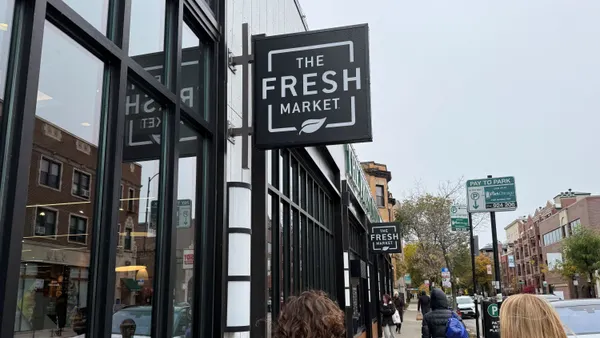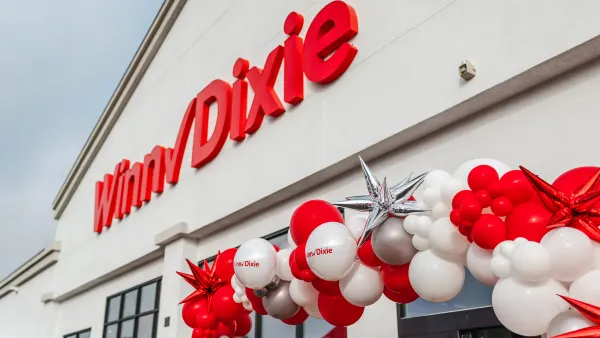Dive Brief:
- Shoppers are making more trips to grocers and general retailers, according to new analysis from mobile locations analytics firm Placer.ai. The firm assessed foot traffic at the top 10 grocery and general merchandise retailers during Q2.
- Walmart saw a 14.1% increase in traffic in Q2 compared to Q1, while Target saw an 8.5% increase and Safeway saw a 7.2% increase. Aldi's traffic decreased 2.8% from Q1.
- H-E-B led the pack in loyalty with an average of 8.5 visits per customer during the quarter, beating out Walmart at 7.9 visits. Kroger (6.8) and Publix (6.4) trailed behind.
Dive Insight:
Walmart's place at the top of this list isn't surprising based on the sheer number of store locations that it maintains across the U.S. Walmart Supercenters are known for offering everything from kale to car batteries, and the retailer's increased emphasis on grocery could be driving even more more traffic. Walmart has closed eight of the 700 Neighborhood Markets it operates across the U.S., but the retailer's grocery format still saw 4% foot traffic growth from Q1, according to Placer.ai.
High traffic is valuable, but H-E-B’s claim to having the most frequent, loyal shoppers could be even more important. Retailers are competing at lightning speed to differentiate and to draw consumers from competitors. The Texas-based chain has established itself as a cult favorite in the region through many unique offerings geared toward its specific demographic including rodeo-scented soap. It’s still making a big push to increase its digital capabilities, too, including a current pilot with Udelv to test driverless delivery in San Antonio.
Placer.ai found that Costco made major headway in the wholesale department, where bulk shoppers often require fewer visits because they’re purchasing larger quantities at a time. With 4.3 visits per shopper during Q2, the retailer accounted for 8.2% in total traffic. Costco continues to resonate with its members, recently beating Amazon on a customer satisfaction survey, and the wholesale club has reported that 90.7% of customers members renew their memberships.
Although grocery retailers have been trying to grow digital sales, a majority of shoppers are still turning to in-store purchases for the bulk of their shopping needs. According to Coresight Research, only 36.8% of consumers purchased groceries online between 2018 and 2019, an increase from the year prior but still well under half of consumers. Even if shoppers are using e-commerce more often, most people have not fully committed to online purchasing for all their needs.
Analyses like these have some limitations given the number of retail locations and the many factors that could influence shopper behavior. Still, the findings indicate a strong Q2 for key players and reiterate the importance of brick-and-mortar retail in the grocery experience.









